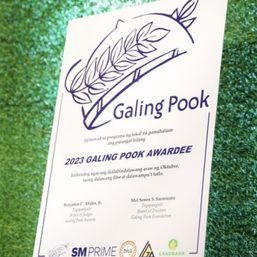SUMMARY
This is AI generated summarization, which may have errors. For context, always refer to the full article.
![[OPINION] Implementing a science-based granular lockdown for NCR](https://www.rappler.com/tachyon/2021/03/tl-granular-lockdown-2.jpg)
Granular and focused lockdowns can slow down the spread of the pandemic, and their use should be encouraged during this surge in the NCR. However, it is important to design granular lockdowns that effectively prevent disease transmission. At the moment, different kinds of lockdowns are being implemented, from 4-day lockdowns in Manila to 14-day special concern lockdowns in Quezon City.
What is the scientific evidence for the ideal length of a granular lockdown, and the ideal timing for PCR swab testing of individuals in that lockdown?
The Centers for Disease Control and Prevention (CDC) of the United States have modeled the risk of transmission for different lengths of quarantine, and their findings are shown in the table below. The table shows transmission risk at the end of a lockdown given the length of the lockdown, and whether or not testing is done within 48 hours of the end of the lockdown.
Based on this data, we can predict that if an LGU enforces a 7-day lockdown in a barangay without testing at the end of the lockdown, there is a 10% risk that COVID-19 positive residents of that barangay would not be detected. Adding a PCR swab test at the end of the lockdown would lower the risk that the virus would still be able to escape the lockdown to 4%.

Notice that the risk of transmission even with a PCR swab test is not zero if the lockdown length is 7 days or less, because of the high probability of false-negatives in the PCR swab test. In other words, with a lockdown of less than 7 days, 4 out of every 100 barangay residents will test negative on a swab test even if they are actually infected with the virus. We therefore strongly discourage LGUs from implementing lockdowns that are shorter than 7 days.
Instead, in light of the scientific evidence, we recommend that granular lockdowns be at least 10 days in length, with PCR swab testing done on the eighth day rather than at the beginning of the lockdown.
Practically speaking, what this means is that once an LGU locks down a street, a block of streets, or a barangay, it would wait 8 days before testing all the residents in the lockdown. Residents who test negative on the eighth day would be allowed to leave quarantine after the tenth day. Residents who test positive, on the other hand, would have to be isolated for an additional ten days while their households would have to be held in quarantine for an additional 14 days.
This lockdown strategy would reduce the transmission risk to less than 1%, because it would capture individuals who are positive who would have tested negative earlier during the lockdown. This should be an acceptable risk for a shorter period of quarantine for our kababayans. It would also lower the cost of these granular lockdowns for our LGUs who have the responsibility of providing aid for those constituents who are in community quarantine.
Finally, I should note that these quarantine guidelines should also apply to international travelers returning to the Philippines. We have recently detected the B117, the B1351, and the P1 variants in our country, suggesting that our quarantines are leaky. To make our international quarantines more airtight, they should be lengthened to 10 days with PCR testing on the eighth day. The current protocol of 7 days with testing on the sixth day is still too leaky, with a 4% risk of false negatives. We have to do better. – Rappler.com
Reverend Fr. Nicanor Austriaco, OP is Visiting Professor of Biological Sciences at the University of Santo Tomas, and an OCTA Research Fellow.
Add a comment
How does this make you feel?





![[Newsstand] The Marcoses’ three-body problem](https://www.rappler.com/tachyon/2024/04/tl-marcoses-3-body-problem.jpg?resize=257%2C257&crop=451px%2C0px%2C1080px%2C1080px)
![[Edgewise] Preface to ‘A Fortunate Country,’ a social idealist novel](https://www.rappler.com/tachyon/2024/02/a-fortunate-country-february-8-2024.jpg?resize=257%2C257&crop_strategy=attention)
There are no comments yet. Add your comment to start the conversation.